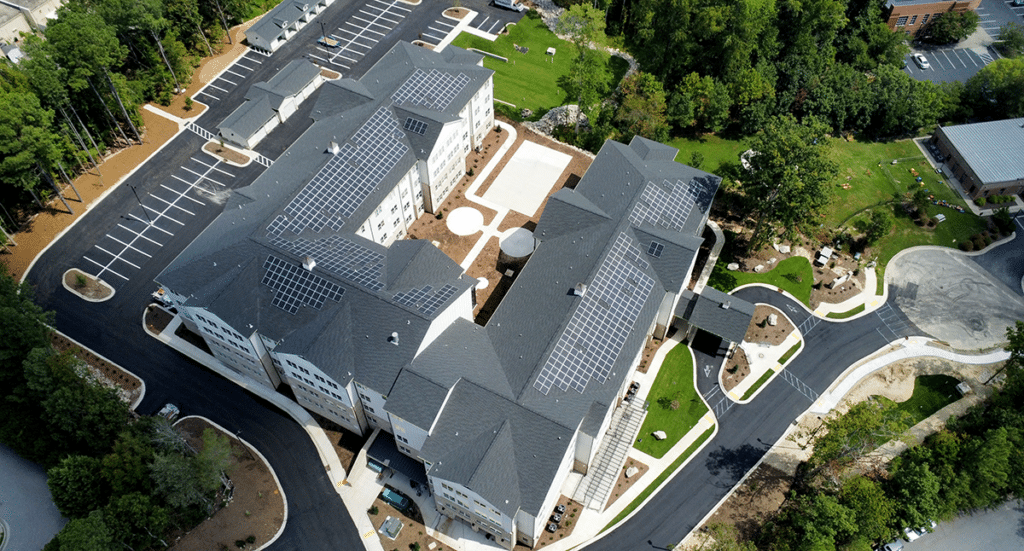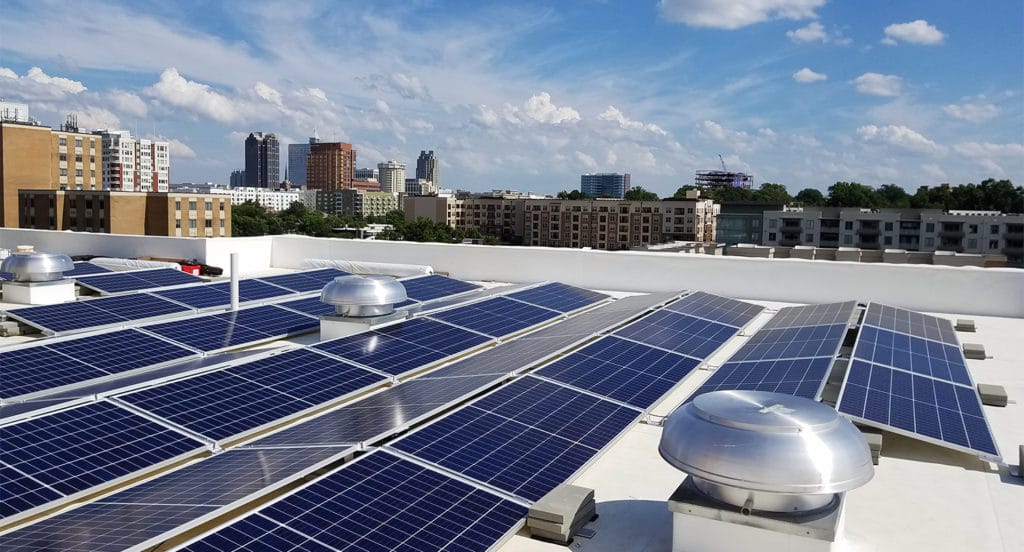The New ‘It Couple’ of Tax Credit Incentives in Real Estate Development for 2025
Randy M. Lucas, CPA / CEO + Principal Consultant / Lucas Tax + Energy Consulting LLC
As far as I can remember, I have always been a fan of storytelling, especially in the form of movies or in a well-written television series. There is something appealing about two strangers finding each other and overcoming challenges to find love and of course live happily ever after. Sometimes the actors find themselves in a relationship off camera and they become the next “It Couple” and we are riveted.
It is not as glamorous as a Hollywood movie script or your favorite streaming service’s Top 10 series, but in renewable energy and real estate development, two incentives from two different worlds are becoming the “It Couple” that has a lot of investors, communities, and policymakers talking like a Hollywood Hot Gossip show. The two ‘It Couple’ incentives are the Section 48E Investment Tax Credit (ITC) and the Section 42 Low-Income Housing Tax Credit (LIHTC). These two crazy kids just might overcome challenges and obstacles to make a great pairing and love story—in addition to perhaps contributing to solving a huge affordable housing problem in the United States—and live happily ever after.
In the renewable energy industry, we are witnessing a trend of housing developments that are fully embracing combining ITC and LIHTC for affordable housing and multi-family developments. This is most prominently seen with pairing the development qualifying for LIHTC with ITC-qualifying assets—predominantly solar, but potentially also including a combination of solar and energy storage, small wind and solar, combined heat and power systems, microgrids, and geothermal systems.
The ITC and LIHTC pair well together because they both provide significant financial incentives that can be leveraged to reduce the overall cost of developing affordable housing projects and reduce operating and energy costs. This can arguably allow developers the ability to develop more much-needed housing in many communities across the U.S.
Combining ITC and LIHTC credits can make development projects more financially feasible by lowering both construction and operational costs. This allows developers to invest in more energy-efficient features of the buildings, which can then lead to reduced utility expenses and protection from future rate hikes—benefiting both developers and future tenants. One of the reasons this It Couple materialized is the introduction of the ability to monetize the tax credits through transferability introduced by the Inflation Reduction Act (Section 6417). This allows more potential liquidity to the developer by monetizing credits and potentially reducing the need for Tax Equity Investors and simplifying the project structure compared to traditional tax equity deals of the past. Think of transferability as the supporting character to the It Couple (e.g., the quirky and hip best friend who introduces the couple to each other).
On top of the operational benefits of the ITC and LIHTC, their combination can attract a broader range of investors—including those interested in both affordable housing and renewable energy investments. To maximize credits, we are finding that developers who are using the ITC and LIHTC often size solar systems to offset common area electricity costs (rather than individual tenant meters) for better financial return.
ITCs can be combined with LIHTCs, but careful structuring is required. The challenge (the movie plot twist) for combining the two tax credits can arise from the basis reduction rules—claiming the ITC reduces the overall capital asset depreciable basis of the property by 50% of the ITC amount. This basis reduction can lower the amount of LIHTC a project can claim. However, developers often use lease pass-through structures or special purpose entities to maximize both credits while maintaining tax efficiency.
Additionally, for the ITC to receive the full 30% (instead of 6%), development projects must comply with the Labor Requirements from the Inflation Reduction Act—namely meeting the prevailing wage and apprenticeship requirements by the developer or the contractors/subcontractors of the project. This means contractors must pay laborers at least the prevailing wage rates of the county where the development is located and ensure a portion (>15%) of labor hours are performed by apprentices. These labor requirements can increase labor costs and LIHTC developers should factor this into project budgets. However, there are exemptions that can apply—such as for smaller solar systems (<1 MW), where these requirements do not apply unless voluntarily included.
In some developments, the ownership may be held by tax-exempt entities or non-taxpaying organizations (non-profits or municipalities). Again, another supporting character to our ITC and LIHTC combination is the elective pay option (Section 6417), which allows a tax-exempt entity to invest in renewable energy and make an elective pay claim similar to the ITC claim in the private sector. This is something that has to be structured carefully, but this new solution will be impactful for many communities in desperate and dire need of additional affordable housing units to combat rising housing costs and overpopulation in certain locations.
When a LIHTC project is owned by a nonprofit or uses tax-exempt financing, the ability to claim ITCs may be restricted. Tax-exempt entities face some rules within the tax code that limit depreciation and ITC benefits for projects financed with tax-exempt bonds or owned by government/nonprofit entities. However, a common workaround is third-party ownership (e.g., a for-profit solar entity leases the system to the LIHTC project).
The ‘It Couple’ is a growing trend supported by other incentives, which really illustrates the foundation of the policy of the Inflation Reduction Act—that one incentive will not cancel out the benefit of another incentive. Instead, they combine to make the incentive value that much stronger, producing greater outcomes to allow us all to… of course, live happily (and healthier) ever after.


Ready to learn more?
Schedule a consult with Mickey Fanney on our commercial solar team for a free project evaluation. Mickey can discuss your project and explain how SEM can design and execute a solar solution that meets your goals and takes advantage of the solar “It Couple”.















